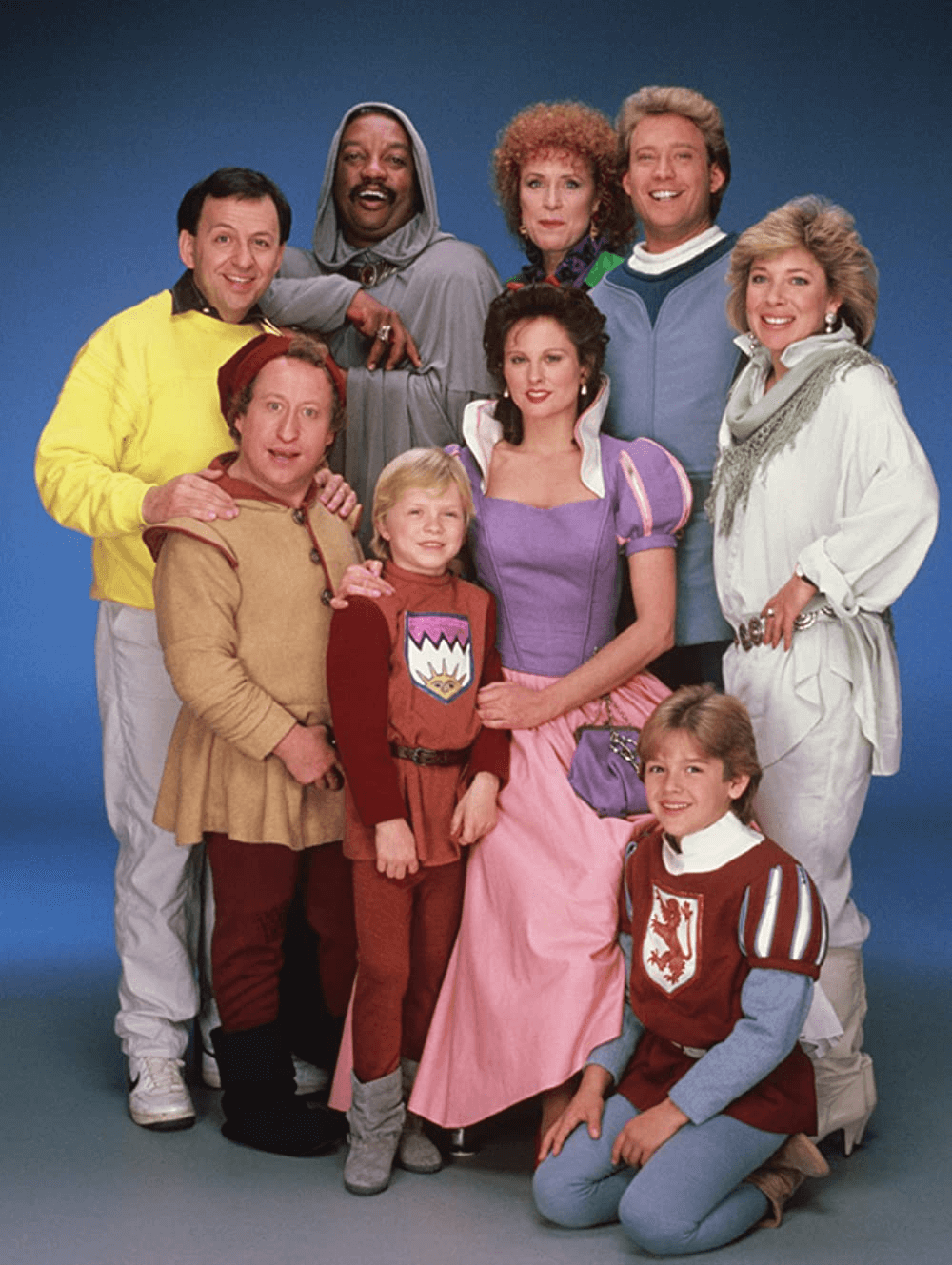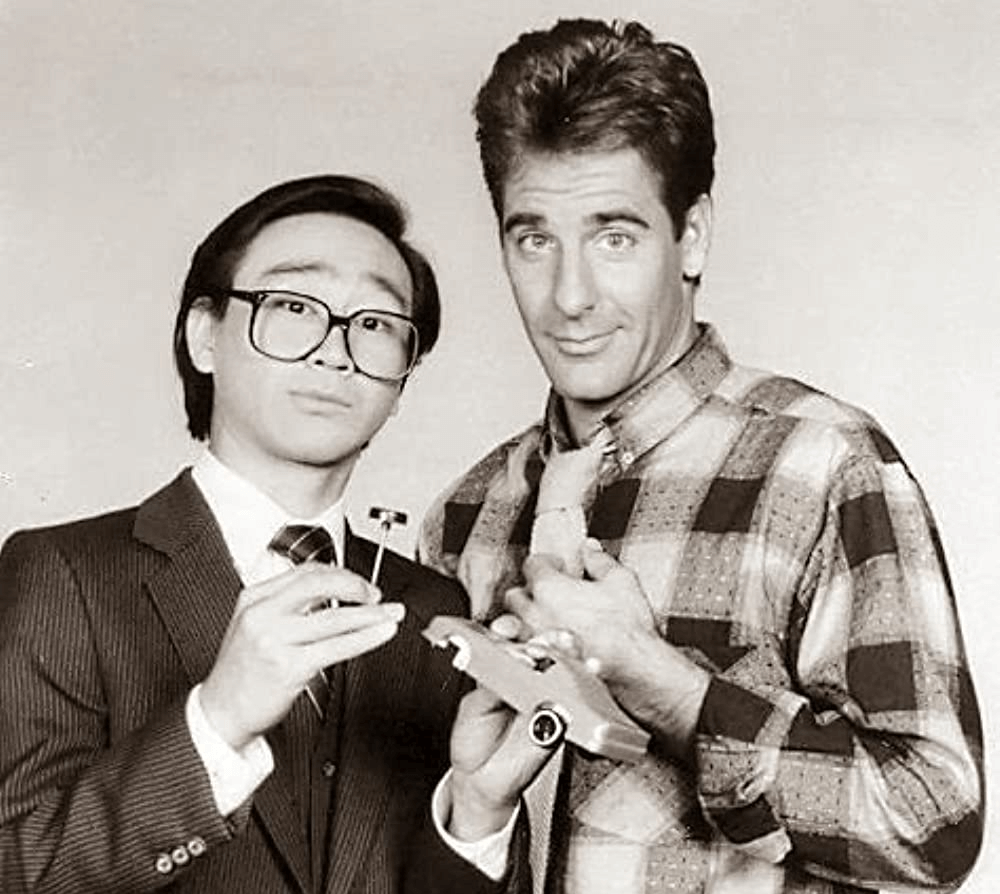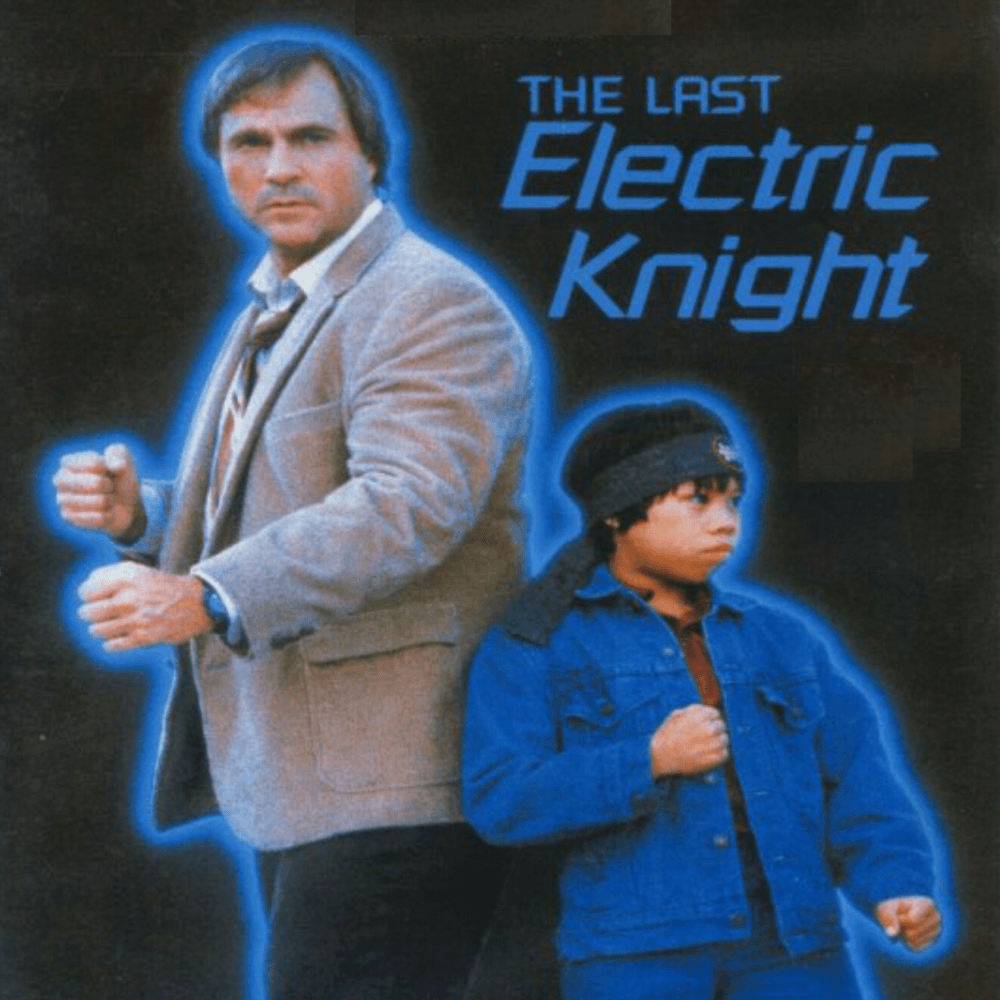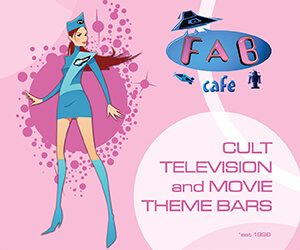Ah, telephemera… those shows whose stay with us was tantalisingly brief, snatched away before their time, and sometimes with good cause. They hit the schedules alongside established shows, hoping for a long run, but it’s not always to be, and for every Street Hawk there’s two Manimals. But here at STARBURST we celebrate their existence and mourn their departure, drilling down into the new season’s entertainment with equal opportunities square eyes… these are The Telephemera Years!
1986-87
Like much of the late 1980s, the story of the 1986-87 season is one of NBC dominance. The Peacock network again enjoyed the number one show with The Cosby Show, and that ratings behemoth was joined at the top of a sitcom triple bill by Family Ties and Cheers as America decided it liked its comedy either soaked in saccharine or beer. The Golden Girls and Night Court gave NBC five of the top seven shows, with just CBS’s interfering murder magnet Jessica Fletcher and the current affairs of 60 Minutes threatening its hegemony.
ABC, which had lost The Colbys in the Summer of 1986, did have the light comedy of Growing Pains, Who’s the Boss?, and the “will they, won’t they?” tension of Moonlighting, and was probably hopeful of success with new shows Head of the Class and Sledge Hammer!, with mixed results. Fame, The A-Team, and Airwolf all also reached the end of their runs, but making their bows in the Fall of 1986 were ALF and LA Law on NBC (both of which made the top thirty in their first seasons), while Fox unveiled their debut line-up which included 21 Jump Street, Married… With Children, and The Tracey Ullman Show. But what about the shows that didn’t make the grade? This is the story of more near misses from the 1986-87 season…
The Charmings (ABC): Replacing the beloved Webster, even its final season, was always going to be a tough task but The Charmings – created by Who’s the Boss? alumni Prudence Fraser and Robert Sternin – went about the task by offering something familiar yet altogether different. This was a family sitcom, alright, but it was a world away from the story of a poor young black boy adopted by rich white parents…
The titular family are the stuff of legend, literally; Snow White and her Prince Charming, awoken from a thousand-year sleep, have to adjust to life in modern Los Angeles. Together with raising their children, Thomas and Cory, the Charmings also have to deal with ill-intended but often helpful interference from Lilian, Snow White’s evil witch stepmother (played by British actress Judy Parfitt). A wisecracking magic mirror and one lone dwarf are also along for the ride.

Six episodes aired in the Spring of 1987, with Tales of the Gold Monkey‘s Caitlin O’Heaney and soap star Christopher Rich in the title roles, and there was enough interest that it was brought back in the Fall for a full season. O’Heaney failed to make the transition and was replaced by Carol Huston, who just didn’t have the magic of her predecessor and failed to set ratings alight, although the safe and lacklustre stories might well have done for the show anyway, especially as it was programmed opposite new Cosby spin-off, A Different World, the number two show of the season.
Still, the show had its fans and its surprising that it hasn’t been released on home video, although there are episodes to watch on YouTube if you’re curious. Fraser and Sternin later developed The Nanny for Fran Drescher but perhaps the biggest thing to come out of the show was young Brandon Call, a Young Artist Award winner for his role as Thomas and soon to become Hobie Buchanan on Baywatch. Charming.
Spies (CBS): Perhaps the most remarkable thing about Spies is that George Hamilton was still getting leading roles in 1987, when the series debuted as a mid-season replacement on CBS. Hamilton, who had been in the business for thirty-five years by the time he landed the role of Ian Stone and his last big hit was 1979’s Love at First Bite (and even that was considered a surprise after years of TV guest roles had watered down his cachet).
Spies, though, is as anachronistic as its star, the story of a washed-up secret agent who is about to be fired for living beyond his means in his undercover role as a playboy but is given a second chance after the intercession of well-meaning pencil pusher Ben Smythe (Saturday Night Live‘s Gary Kroger). Smythe is put on active duty and made Stone’s new partner, there to keep his spending in check, and the two have to find a way to make it through dangerous missions alive.

The unaired pilot had starred Tony Curtis and Hamilton tries his hardest to bring a similar playful spirit to the affair, doing his best with some weak material. Unfortunately, even at his peak Hamilton’s best wasn’t good enough and the scripts did nothing to play to Kroger’s comedic strengths.
Having replaced The Wizard in early March, Spies was itself gone by late April, its six episodes not troubling the Nielsen ratings enough to warrant listing in the top eighty-three shows of the year. Needless to say, there’s no home video release, no clamour for a bells and whistles Blu Ray treatment, and only a few clips on YouTube. Sometimes shows are treated badly by history but Spies got everything it deserved.
Gung Ho (ABC): Gung Ho was based on the movie of the same name, which starred Michael Keaton as the foreman of a closed-down factory who brings Japanese investment to re-open the plant, earning as much ire as admiration from the people of his small town. Keaton didn’t make the transfer to TV and was replaced in the role of Hunt Stevenson by Scott Bakula, two years away from Quantum Leap (which – spoilers – gives away the ending of how this show fared).
With the grunt work already done by the movie, and the plant established as the series opens, much of the humour of the show revolved around Hunt’s attempts to liaise with the Japanese investors’ representative – Gedde Watanabe, reprising his role from the film – and the fish out of water situations the foreigners got themselves into.

As he would later prove with his long run as Sam Beckett, Bakula was a good lead and Gung Ho isn’t quite the horror show it could so easily have been in terms of the stereotypical differences between American and Japanese attitudes to work. This is especially refreshing given that Edwin Blum, the writer of the movie and developer of the TV series, was into his sixth decade of scriptwriting and could be forgiven for having an outdated view. However, Blum – who apparently coined the nickname Tricky Dicky for Richard Nixon – always kept himself abreast of the spirit of the times.
Itself a replacement for Sledge Hammer (which was moved to Saturday nights to stop it becoming too popular), Gung Ho lasted for just nine episodes in the face of strong competition from Dallas and Miami Vice. It – and timeslot pal Dads – were shuffled off to be replaced by The ABC Friday Night Movie, as sure a sign as any of a network giving up.
Down and Out in Beverly Hills (Fox): There are many reasons for a TV show to go down in history. It might have run for the most episodes, cost the most money, or scored the highest rating for a single episode, for example, but there are also some achievements a producer would rather not earn and Down and Out in Beverly Hills is the millstone around Ronald E Frazier’s neck.
Frazier, who had a decent if unspectacular record as a producer of single season sitcoms (including early Sarah Jessica Parker vehicle Square Pegs), must have thought he was finally onto a winner with this adaptation of the hit movie, which had starred Nick Nolte as a homeless man bringing turmoil (and eventually harmony) to the lives of well-to-do Richard Dreyfuss and Bette Midler.

The movie was critical and financial success, but the TV series was missing the four things that made that possible: Nolte, Dreyfuss, Midler, and director Paul Mazursky. In their place were Hector Elizondo and Anita Morris as the affluent hosts to Tim Thomerson’s catalytic hobo (with Bill Foster behind the camera) and despite the abundant qualities of those individuals, the shoes they had to fill were too large.
It didn’t help, of course, that the movie pretty much told the story and the TV necessarily neutered some of the harder edges of Mazursky’s for an 8pm Saturday night slot, even on Fox. Still, that it made it to thirteen episodes should be taken as an achievement in itself but not as much as earning the accolade of the first show ever to be cancelled by the Fox network.
Sidekicks (ABC): Airing as part of ABC’s Disneyland showcase in February 1986, The Last Electric Knight starred Gil Gerard, the former Buck Rogers, as policeman Jake Rizzo, who agrees to take in the young grandson of an aged martial-arts master when the old man can no longer look after him. The twist is that the old man has passed on all his tricks to young Ernie, who is now the last heir of a legendary dynasty, and the boy uses his skills to defend himself and his friends, and help Rizzo solve crime.
The special was well-received enough that a full series was ordered, a co-production between Disney and Motown Productions. Ernie Reyes Jr, a Filipino actor who was proficient in martial arts himself, had made his debut in Motown’s The Last Dragon (and also appeared in Red Sonja) and was perfect for the role of his namesake, mentored from beyond the grave by grandfather Sabasan (Keye Luke).

Reyes Jr and Gerard have a decent chemistry and it’s surprising that the youngster didn’t have a bigger career afterwards, although he did appear in Teenage Mutant Ninja Turtles 2: The Secret of the Ooze (and stood in for Donatello’s fight scenes in the first movie) and produced and starred in Surf Ninjas in 1993.
The show gained a good following among karate-crazy kids but was shunted to an early evening slot on Saturdays and, although it did finish its full run of twenty-three episodes, there was to be no second season. Perhaps it might have been better to make a series out of the life story of creator Dan Gordon, who also wrote Surf Ninjas for Reyes Jr and was given a “story by” credit for Rambo: Last Blood; he was fired from his first job as a screenwriter for Universal for stealing office supplies and also once joined the Israeli army because he feared the Mafia were out to get him after his debut film became involved in a money-laundering scam.
Check out our other Telephemera articles:
The Telephemera Years: 1966 (part 1, 2, 3, 4)
The Telephemera Years: 1968 (part 1, 2, 3, 4)
The Telephemera Years: 1969 (part 1, 2, 3, 4)
The Telephemera Years: 1971 (part 1, 2, 3, 4)
The Telephemera Years: 1973 (part 1, 2, 3, 4)
The Telephemera Years: 1975 (part 1, 2, 3, 4)
The Telephemera Years: 1977 (part 1, 2, 3, 4)
The Telephemera Years: 1980 (part 1, 2, 3, 4)
The Telephemera Years: 1982 (part 1, 2, 3, 4)
The Telephemera Years: 1984 (part 1, 2, 3, 4)
The Telephemera Years: 1986 (part 1, 2, 3, 4)
The Telephemera Years: 1987 (part 1, 2, 3, 4)
The Telephemera Years: 1990 (part 1, 2, 3, 4)
The Telephemera Years: 1992 (part 1, 2, 3, 4)
The Telephemera Years: 1995 (part 1, 2, 3, 4)
The Telephemera Years: 1997 (part 1, 2, 3, 4)
The Telephemera Years: 2000 (part 1, 2, 3, 4)
The Telephemera Years: 2003 (part 1, 2, 3, 4)
The Telephemera Years: 2005 (part 1, 2, 3, 4)
The Telephemera Years: 2008 (part 1, 2, 3, 4)
Titans of Telephemera: Irwin Allen
Titans of Telephemera: Stephen J Cannell (part 1, 2, 3, 4)
Titans of Telephemera: Hanna-Barbera (part 1, 2, 3, 4, 5)
Titans of Telephemera: Kenneth Johnson








